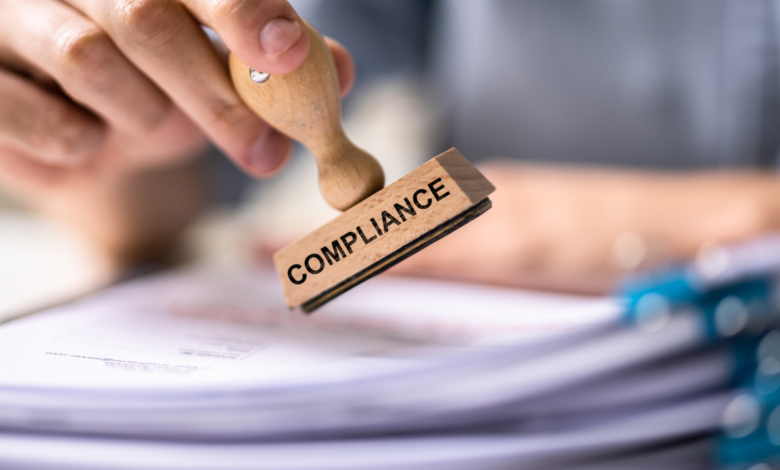Understanding the Legal Requirements for Workplace Safety and Compliance

Ever wonder why there are so many safety rules at work? Why do you have to wear that helmet or those ugly goggles? It’s all because of workplace safety laws. These laws are there to keep everyone safe and sound. Let’s dive into what these laws are all about, what bosses have to do, what rights workers have, joint issues and what happens if these rules get broken.
Overview of Workplace Safety Laws
First off, let’s talk about the three extensive regulations in the UK that keep workplaces safe:
Health and Safety at Work Act 1974 (HSWA)
This is the primary set of workplace safety regulations in the UK. The HSWA covers everything from the office to construction sites. It imposes the responsibility on employers to ensure workplace safety, preventing accidents and keeping workers healthy.
Management of Health and Safety at Work Regulations 1999
These regulations focus on the nitty-gritty details. Employers must assess risks, provide training and have proper health and safety arrangements in place.
Workplace (Health, Safety and Welfare) Regulations 1992
These regulations are about the environment. They cover things like ventilation, lighting, temperature and facilities like toilets and break rooms. It’s the stuff that makes a workplace comfortable and safe.
Employer Responsibilities
Under these regulations, employers have a lot on their plate. They must identify potential hazards and figure out how to avoid them, which includes everything from slippery floors to handling dangerous chemicals. Employees need to know how to do their jobs safely, so employers must provide regular training sessions and updates on new risks and keep everyone informed.
All equipment must be safe to use, which means employers need to maintain and check machinery regularly—no one wants to work with a faulty drill or a broken ladder. Workers also need access to clean toilets, fresh drinking water and places to rest; it’s not just about being nice; it’s the law.
Adequate first aid provisions must exist, meaning a stocked first aid kit and someone trained to use it. For some jobs, regular health checks are a must, especially for roles involving hazardous substances or loud noises, so employers must keep an eye on workers’ health.
Employee Rights
Workers have rights, too and these same regulations back them up. Employees have the right to work in a place where risks are appropriately managed and if something feels unsafe, they can (and should) speak up. Workers should be trained for their jobs and informed about any risks and they also have the right to ask questions if they don’t understand something.
Employees should expect that all equipment is safe and well-maintained and if something’s not right, they can report it without fear of getting in trouble. Workers have the right to access proper facilities, so if there’s no clean water or the toilets are always broken, it’s a problem that needs fixing.
For jobs with specific risks, employees can get regular wellness checks and appropriate health and safety training to keep everyone aware of any potential issues early on.
Common Compliance Issues
Even with all these rules, things can still go wrong. Here are some common compliance issues:
Incomplete Risk Assessments
Sometimes, employers don’t identify all the risks, leaving gaps in safety measures. This oversight can result in unaddressed hazards that put workers in danger. Comprehensive and ongoing risk assessments are crucial to ensure all potential risks are mitigated.
Lack of Training
Workers might need more training, leading to accidents and injuries. Proper training may help employees handle equipment safely or know what to do in an emergency. Regular and thorough training sessions are essential to keeping everyone informed and safe.
Poor Maintenance
Equipment that isn’t regularly checked and maintained can become dangerous. If not adequately maintained, machines can malfunction, causing accidents or even fatalities. Routine inspections and prompt repairs are necessary to keep equipment in safe working order.
Insufficient First Aid
Not having enough first aid provisions can turn a minor injury into a major one. Inadequate first aid supplies or a lack of trained personnel can delay crucial medical assistance. Ensuring well-stocked first aid kits and trained staff on-site is vital for immediate response to injuries.
Inadequate Facilities
Missing or broken facilities, such as toilets or rest areas, can lead to health issues and discomfort. Poor hygiene and a lack of basic amenities can cause illness and lower morale among workers. Providing clean and functional facilities is not just a legal requirement but also crucial for overall well-being.
Enforcement and Penalties
So what happens if these laws aren’t followed? There are several ways that the rules get enforced and penalties that can be applied. Health and safety inspectors can show up unannounced to check if everything’s in order, looking for compliance with all the regulations. If something’s wrong, inspectors can issue an improvement notice, requiring the employer to fix the issue by a specific date.
For serious risks, an inspector can issue a prohibition notice, stopping certain activities until the problem is resolved. Failure to comply with these laws can lead to hefty fines, which vary but are usually significant enough to make employers take safety seriously. In extreme cases, employers can face criminal charges, leading to even more substantial fines or, in some cases, prison time for serious breaches.
Training plays a crucial role in compliance as it allows employees to know how to perform tasks safely, reducing the risk of accidents. Basic safety training, such as fire safety, electrical safety training, ergonomics and manual handling online courses, can help workers develop practical knowledge to tackle such situations. An organisation that fails to provide basic training can face penalties or fines, emphasising the importance of keeping workers well-informed and safe.
Workplace safety is no joke. The laws are there to protect everyone, from the CEO to the intern. Employers have many responsibilities, but workers have rights, too. Understanding these can help keep everyone safe and happy at work.

